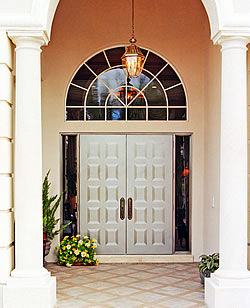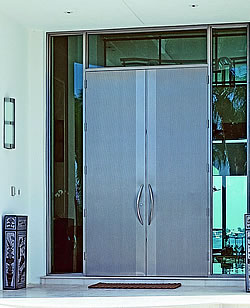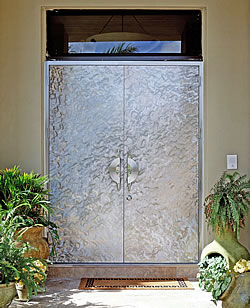When doors are used in corrosive locations like entrances, indoor swimming pools, and tunnels, they are expected to remain functional, secure, and attractive with minimal maintenance. The first stainless steel doors were installed around 1930 on the Chrysler and other high profile buildings and are still in service. These early doors show that stainless steel can be expected to remain attractive and functional for over 100 years if an appropriate grade and surface finish are selected, and they are properly designed, fabricated, and maintained.
When there will be exposure to coastal or deicing salt, indoor swimming pool or corrosive industrial environments, molybdenum containing Type 316 (UNS S31600, EN 1.4401, JIS SUS 316) or a more corrosion resistant stainless steel are generally specified. When doors are sheltered or exposed to particularly high salt levels, a regular maintenance-cleaning program is suggested to remove salt deposits and prevent corrosion staining. This would apply to doors that are in close proximity to the ocean or a roadway with regular deicing salt use.
In demanding locations, hollow doors are specified with stainless steel interior framing. This prevents the galvanic corrosion problems that can occur when stainless steel is clad over a carbon steel frame. (Stainless steel can be clad over wood or carbon steel in locations where moisture infiltration or condensation is not a concern.) The doorframe and hardware should be made of the same stainless steel grade as the door exterior. In corrosive locations, it should be confirmed that the entire door lock mechanism (i.e. not just the exterior) is made of an appropriate stainless steel or corrosion of the other metal(s) may affect door function.
When maximum security is required, the exterior stainless steel door panels are welded together and the welds are blended so that they are not visible. Stainless steel may also be attached to the interior door framework mechanically or with construction adhesives. Solid stainless steel doors made from plate are used for vaults and particularly high security entrances.
Please follow the link below to download an article with more information about stainless steel door specification.
Steeled Against the Elements (14043)




